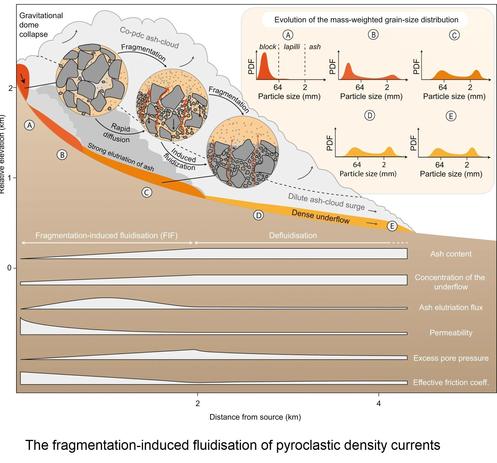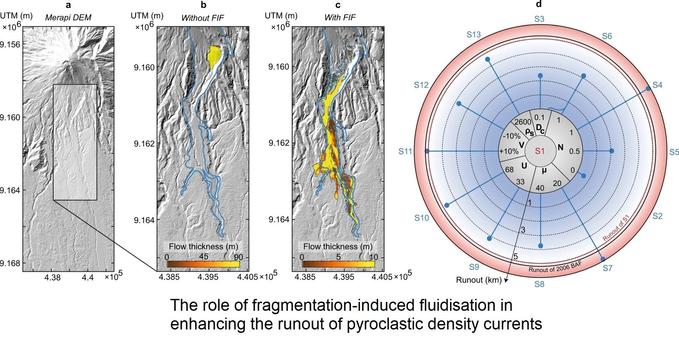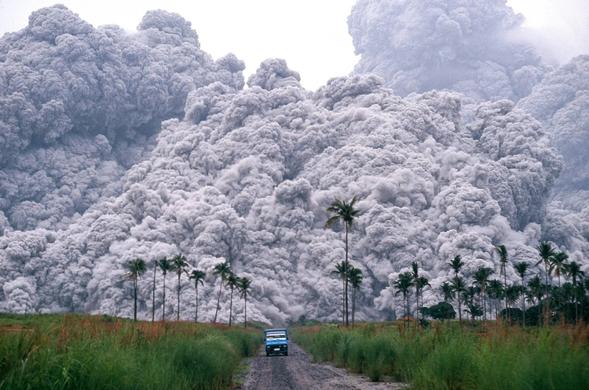🌋 15 June 1991 — Mount Pinatubo erupted in the Philippines, sending an ash plume about 35 km into the sky. One of the largest eruptions of the 20th century, it cooled the globe, reshaped lives, and reminded us of Earth's raw power. #OnThisDay #Pinatubo #Volcano
#Pinatubo
The #volcanic eruptions 🌋 of #Hunga 2022 attracted a lot of attention as they hurled large amounts of water vapor💧into great altitudes of the #atmosphere, considerably increasing stratospheric moisture. However, there is a second, indirect pathway, leading to increased moisture fluxes into the stratosphere after volcanic eruptions. #MPIM_scientist Clarissa Kroll find that for #Pinatubo-magnitude eruptions both pathways can be comparable.
👉https://www.nature.com/articles/s43247-024-01651-w
Picture Credit: NASA/J. Stevens
Obviously, I now must investigate if 1994-1995 and 2016-2017 were in other ways similar to 2023-2024. My favourite culprit would be #HungaTonga – because it's treated as such an underdog in the 2023 discussion that I simply MUST side with that volcanic explosion.😁 (Really, how can they dismiss it? The explosion was HEARD in Alaska, 6000km away... !! Just because as submarine volcano it didn't emit much SO2? That's speci-ist!😁)
August-2016 was preceded by two VEI-4 eruptions in 2015 April and May. That's 17 months between eruptions and the 12 months freak growth rate in North Atlantic 35-50°N. Much like HungaTonga's 18 months between January 2022 and freak 2023-June.
Esp. in light of the sad fact that the #volcano database lists the start date of the eruptions, not the date of an eventual explosion. Eg, HungaTonga in the database has a start date in December 2021 but the VEI-5 explosion occurred mid January 2022. https://volcano.si.edu/search_eruption.cfm Who knows when the explosions in 2015 actually occurred. (Sad!)
Browsing the longer periods of strong growth rates and looking at number of eruptions and VEI4-6 explosions, I see a pattern emerge: immediately after many eruptions or strong explosions, growth rate of SST in the North Atlantic, Center and East longitudes, is negative for a while. But approximately 12 to 18 months after the major volcanic activity, growth rate jumps up and stays high for a few months.
1995 was preceded by 2 VEI-5 explosions in 1991, #Pinatubo in June and another 2 months later. Or let's say what the database really states: 2 volcanos started erupting in April and August 1991 and eventually exploded in a VEI-5. When the explosions occurred I can only tell for Pinatubo: in June. The August eruption might have exploded in 1993 for all we know.
Anyway, so there also was a volcanic match for the strong 1995-1996 growth rate period. Tho, it was very long ago. But that was due to so much SO2 in the system that it cooled the planet for 2 years. And only in 1995, the heating resumed with force, strengthened by an El Nino.
So yeah. As far as I am concerned, the mystery of the gobsmacking bananas 2023 > in the North #Atlantic < is solved. The SO2 reduction from #shipping by the "voluntary regulation" from #IMO is not THE culprit, or the major shipping routes in my rectangle would have behaved differently 2022 - 2023 than other "normal freak occurrences".
I'd have to analyse North Pacific the same way to increase my certainty. But I'm just a layperson, no scientific stringency required. I'll leave it to others. or do it some other #FridaysForFuture day if I feel like it.
Attached are screenshots of the chronological time series from April 1986 to March 2006 and from April 2004 to 2024-March like described in the previous toot. Now with three new columns: "volcanic eruptions", "VEI4-6" and "VEI5-6".
Deadly Volcanic Flow Insights Could Aid Forecasting [pyroclastic flows]
--
https://www.geologypage.com/2023/05/deadly-volcanic-flow-insights-could-aid-forecasting.html <-- shared technical article
--
https://doi.org/10.1038/s41467-023-37867-1 <-- shared paper
--
#GIS #spatial #mapping #spatialanalysis #model #modeling #numericalmodeling #pyroclastic #pyroclasticflows #volcanic #volcanichazard #geology #engineeringgeology #naturalhazard #naturaldisasters #publicsafety #fatalities #rock #ash #transport #injury #death #infrastructure #pompei #pinatubo #pyroclasticdensitycurrents #prediction #forecasting #mitigation #flowmodel #simulations ##
It's Not Just Climate Change: Three Other Factors Driving This Summer's Extreme Heat
https://sports.yahoo.com/not-just-climate-change-three-130500524.html
#HungaTonga #Pinatubo #Volcanoes #ClinateChange #WaterVapor #GlobalWarming #HeatWaves
Official update re: #Pinatubo #Volcano in the #Philippines
"weak" eruption confirmed by #PHIVOLCS
JUST IN: #Pinatubo #Volcano located in the #Philippines was placed on high eruption alert.
Last eruption was 30 years ago. Before that it was centuries ago.
[#BotActu] « Un ancien volcan est-il en train de se réveiller en plein cœur de l'Europe ? » https://www.futura-sciences.com/planete/actualites/volcan-ancien-volcan-il-train-reveiller-plein-coeur-europe-81489/#xtor%3DRSS-8 #activitévolcanique #panachevolcanique #déformationdusol #élévationdusol #massifcentral #volcanéteint #lacdelaach #allemagne #pinatubo #panache #europe #volcan #àlaune #eifel #magma #maar







